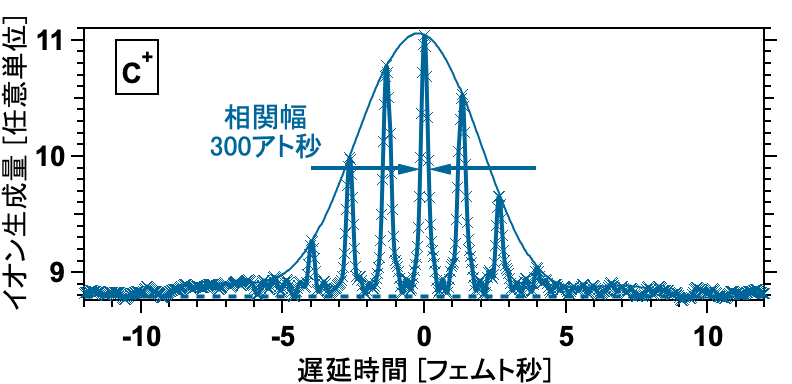DATE2021.08.19 #Press Releases
Molecular response of 3 seconds per kilometer
Disclaimer: machine translated by DeepL which may contain errors.
-The world's shortest autocorrelation time measurement
RIKEN
Graduate School of Science, The University of Tokyo
Summary
A joint research team led by Takuya Matsubara, a trainee (graduate student at the Department of Chemistry, Graduate School of Science, The University of Tokyo), Yasuo Nabekawa, a full-time researcher, Katsumi Midorikawa, a team leader, and Professor Kaoru Yamauchi at the Graduate School of Science, The University of Tokyo, in the RIKEN Advanced Photon Research Center attosecond science research team has irradiated one of multiatomic molecules, the acetylene molecule, and succeeded in "autocorrelation measurement" with the world's shortest time width of 3/kHz (3 x 10-16 s).
This research result indicates that the electrons in a molecule respond to the interaction of light with the molecule in a time shorter than 3 1/10-16 seconds after light irradiation, and is expected to be useful for clarifying and controlling the chemical reaction process that follows this response.
In this study, the joint research team has independently developed a high-intensity attosecond pulse train (APT) beamline. The APT is generated by focusing intense femtosecond laser light onto xenon gas, which is then reflected by a pair of silicon reflectors (SiBS) to remove the femtosecond laser light and simultaneously split the APT into two beams. The time-delay sweep of the two APTs was achieved by precisely controlling the position of one of the two SiBSs. The results show that the amount of carbon ions produced reflects the APT's autocorrelation waveform and the time response of the molecule, with a correlation time width of 300 attoseconds (3/kHz).
This research was published in Optica, an online open access journal of the Optical Society of America (August 11).

Figure: Autocorrelation waveform of attosecond pulse train with the amount of carbon ion production generated from acetylene
For more information, please visit the RIKEN website.


